Valle di Muggio – a slow adventure in Ticino
Hidden and mysterious but full of brilliance - the Valle di Muggio
The Valle di Muggio appears mystical when the mist drifts through the Breggia Valley, sweeping over the steep grassy slopes and enveloping the summit of Monte Generoso. It is not difficult to imagine that mysterious stories could take place in this remote mountain valley in the southernmost tip of Switzerland. In the crime novel "Tessiner Verderben", Sandra Hughes tells of a gruesome discovery in a Nevèra and spins a gripping tale about the various stations in the valley. But as soon as the fog gives way to the sun, the lovely valley shines in all its glory. The view from the summit of Monte Generoso could not be more spectacular. And you can't even begin to imagine that harm could ever befall a human soul in this beautiful place, especially not on a leisurely walk through the nooks and crannies of the valley.
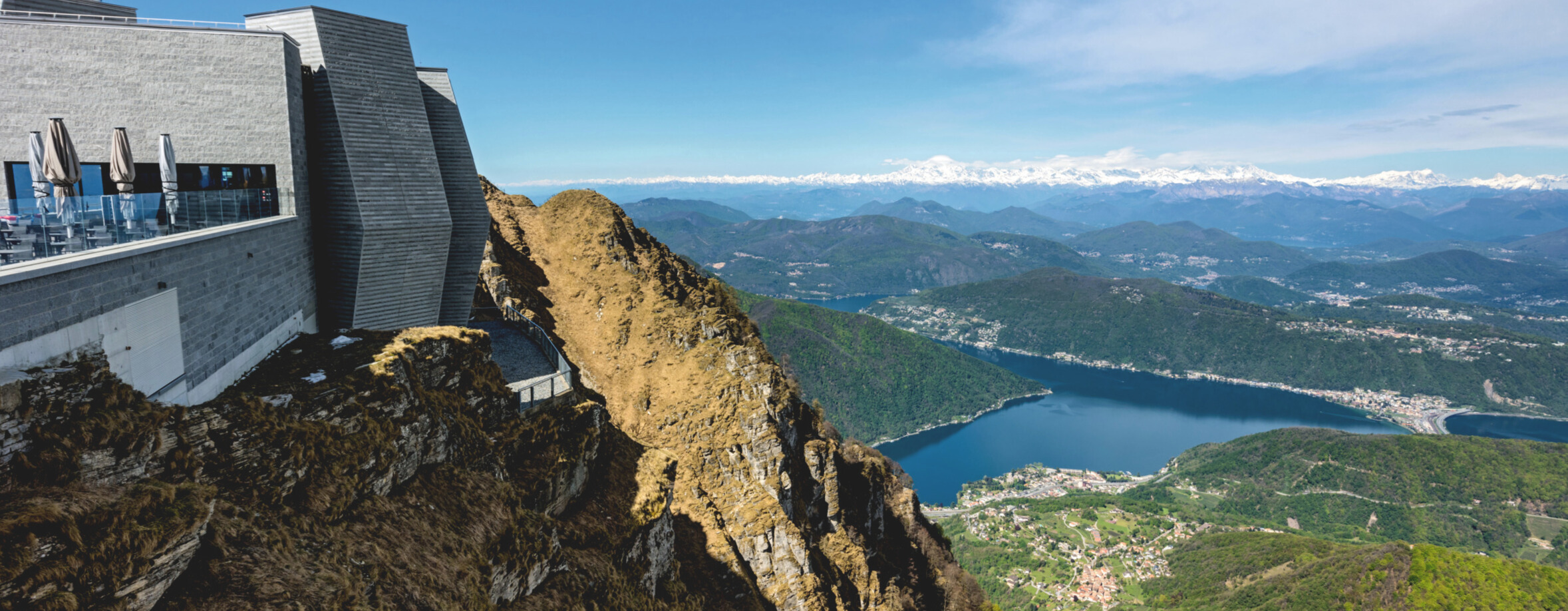
Monte Generoso - an impressive 360° mountain view
Monte Generoso towers above the Mendrisiotto. The summit's magnificent view extends from Piz Bernina, the highest 4000-metre peak in the Eastern Alps, to the rocky peaks of the Finsteraarhorn and Schreckhorn in the Bernese Oberland, then towards the west the roof of Switzerland, the Dufourspitze at 4634 m and the Monte Rosa massif. The Gran Paradiso, the highest 4000-metre peak in the Western Alps, rises above the Aosta Valley, before the view extends southwards as far as the Po Valley, where the last outlines disappear into the haze. And almost vertically beneath your toes, Lago di Lugano shimmers blue-green.
Nostalgia and modernity: Belle Epoque steam train and Mario Botta's Fiore di Pietra
From down there in Capolago, a cog railroad has been running for 130 years up the steep mountain slopes to the summit, which has been a tourist magnet ever since. And the nostalgic trains still steam up the mountain at certain times, taking you back to the Belle Époque era at the end of the 19th century. But the "modern railcars" also exude a touch of nostalgia thanks to the robust wooden seats and the driver's cab with levers and pressure indicators. In just over half an hour, the train winds its way up the steep mountain flanks. The maximum gradient on the 9 km route is 14%. At the top, you are greeted by Mario Botta's monumental Fiore di Pietra. This architectural masterpiece sits boldly on a rocky pulpit in front of the abyss. The light-flooded interior with its large glass fronts is a wonderful place to linger on the summit, even in wind and weather, to marvel at the impressive mountain scenery and, of course, to indulge in culinary delights.
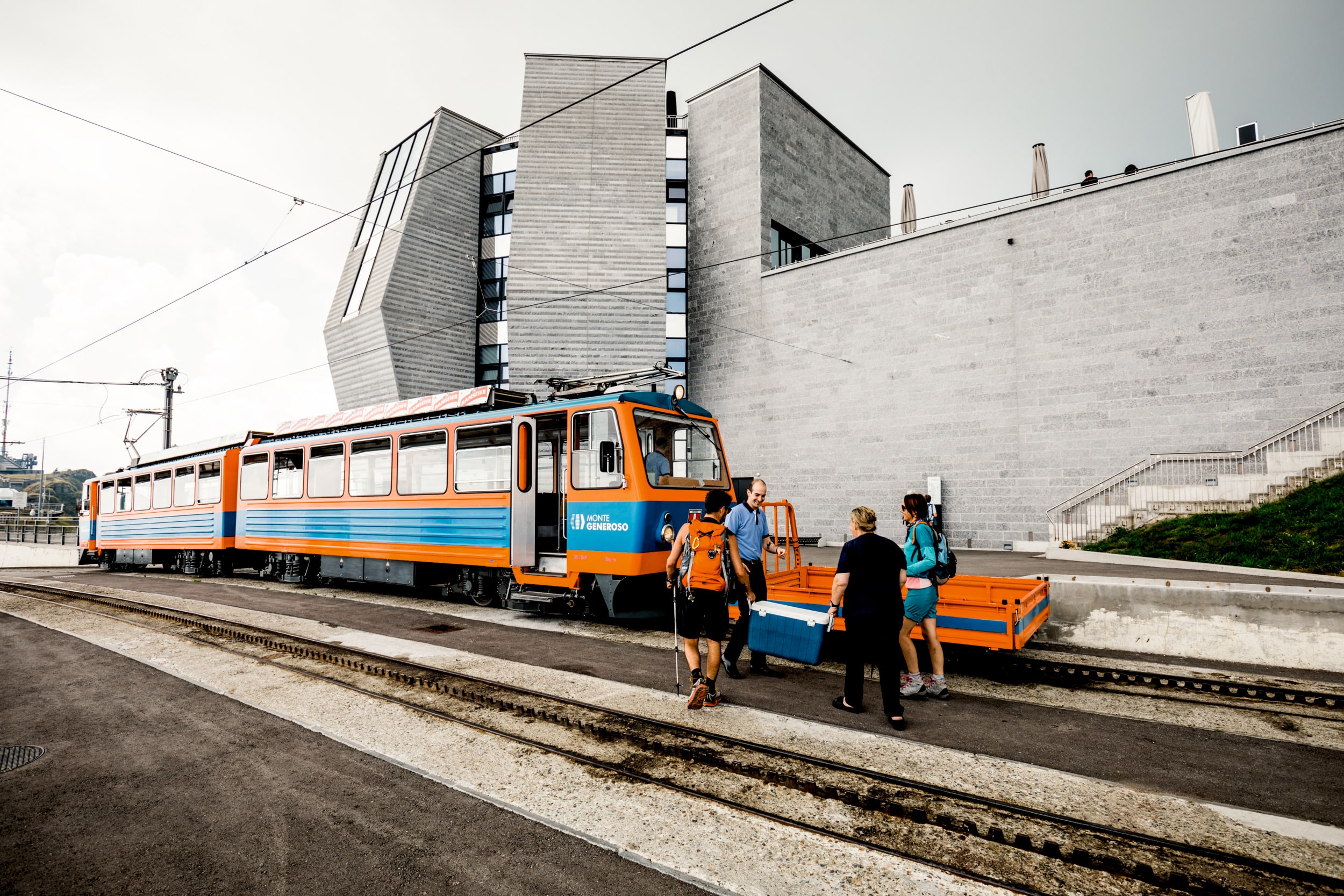
The Nevère - round houses like refrigerators
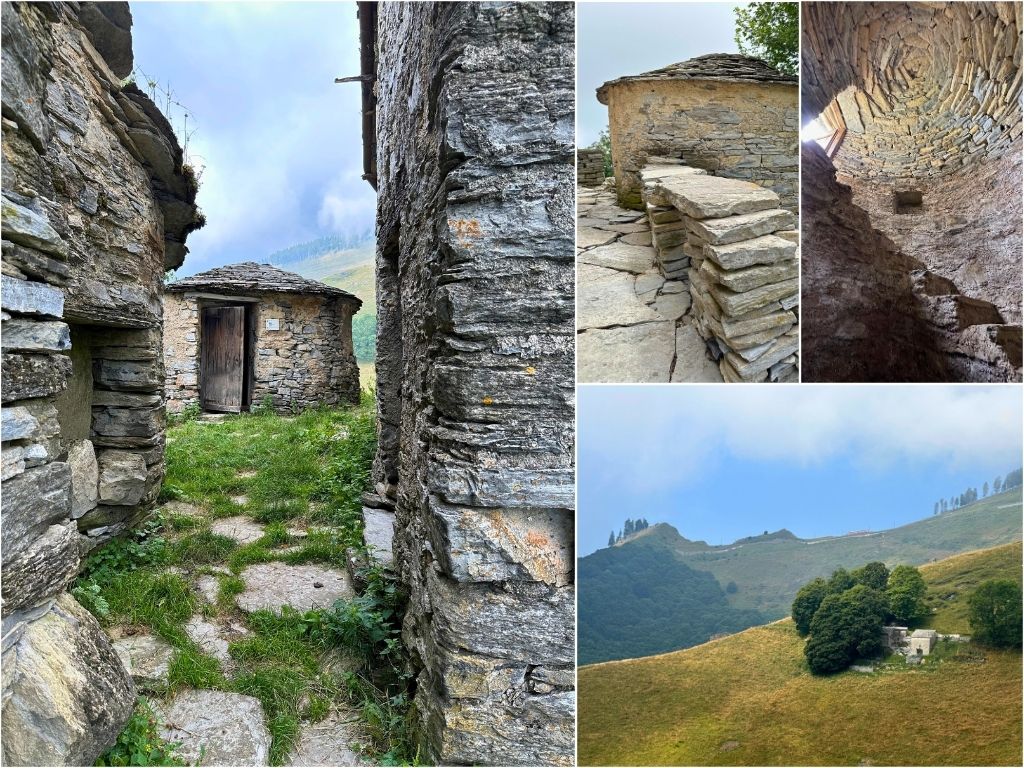
In high season, it can get hectic on the summit of Monte Generoso. However, it only takes a few steps on one of the hiking trails for peace and quiet to return. There are numerous options, for example across the border to Italy or down the grassy slopes to Alpe Nadigh. This typical Ticino alp sits beautifully on the ridge towards Roncapiano. And so begins the story in the detective novel. Mr. and Mrs. Gruner have taken the same route with the aim of visiting one of these Nevère. This should have been the highlight of the excursion. Instead, when Mr. Gruner knocked open the old wooden door to the Nevèra, he saw a dead body at the bottom of the round house. Fortunately, the gruesome story is only fiction and a visit to the Nevère is highly recommended and generally holds no danger of surprises. From the outside, you can only see half of the roundhouse. This is because it reaches at least as deep into the ground as it is high. And not without reason. In winter, the snow was shoveled into the house through the door. This is how the "cellar" filled up until spring. As the layer of snow only melted slowly in summer, the Nevère served as a natural refrigerator. An ideal place to keep milk, cheese and other fresh products cool and store them.
Indulgence at the Albergo Diffuso, a " diffused" hotel in Scudellate
In Scudellate, you are warmly welcomed on the terrace of the Osteria Manciana. The view sweeps out over the valley with a glass of Merlot, a plate of dried meat and sausage from the valley and a slice of Zincarlin, the region's most popular cheese among gourmets. From here, guests are looked after in the Albergo Diffuso, the "scattered" hotel. Several houses in the village of 15 souls are now part of the project, which was initiated to create a network, strengthen local value chains and sustainable tourism and thus stop the exodus. Whether a cozy family room or an exclusive suite over two floors, every wish and taste is catered for and either way, guests are treated to culinary delights with delicious culinary specialties from the region.
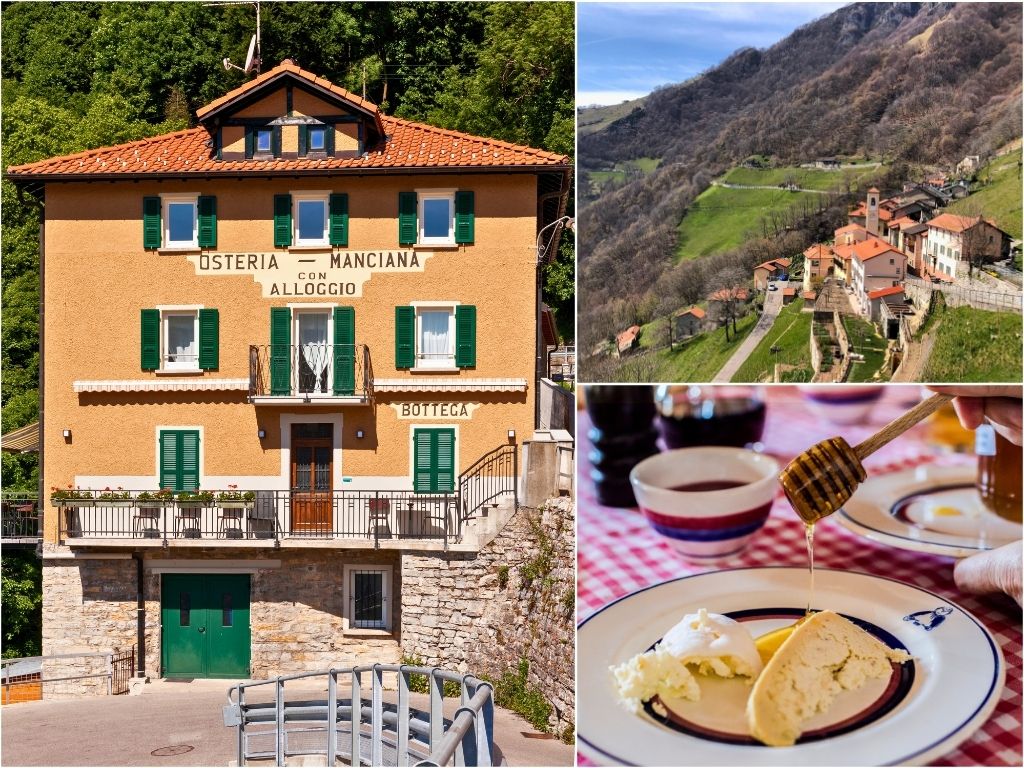
Stories of bird-trapping towers, smugglers and carabinieri
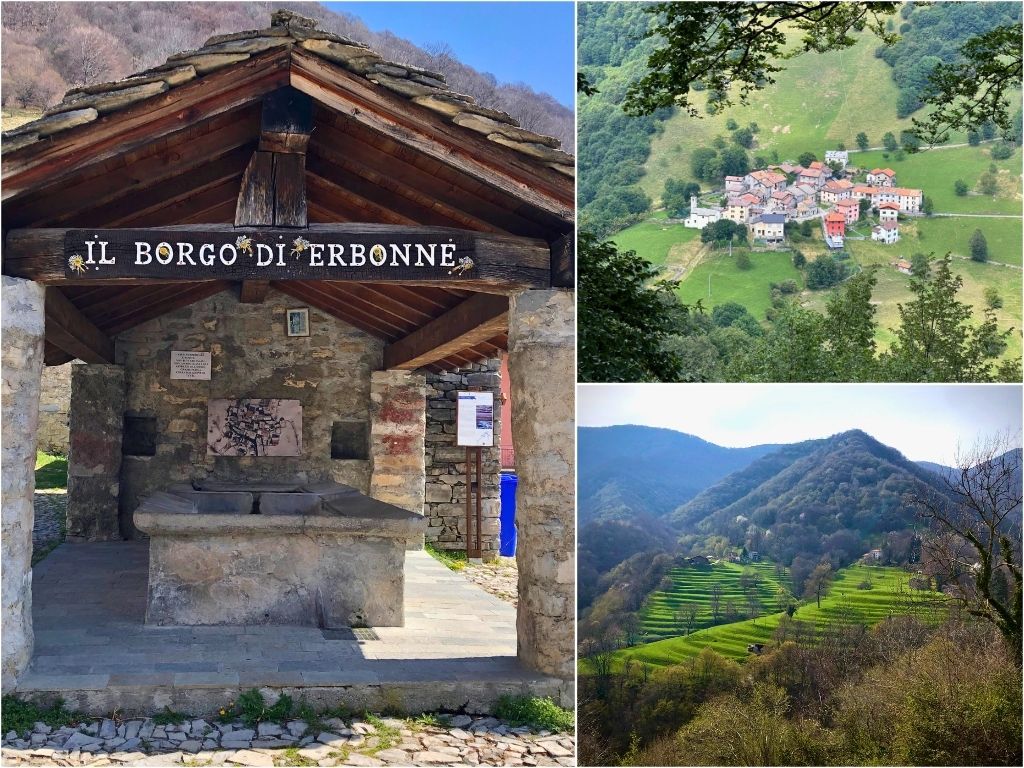
In the past, agriculture only provided the inhabitants of the valley with a poor income. Every conceivably steep mountain slope was terraced to create a food base. And unconventional methods were still used to ensure survival. The Roncoli, for example, are bird-trapping towers. One still stands today not far from Scudellate, the Roncolo di Meri. From the tower, migratory birds were lured inside with bait and then caught in nets strung from trees as they flew out. And even if it's hard to imagine today, the catches relieved hunger. Or the Contrabande, the smuggling of goods across the nearby border, allowed many a family to earn a little extra money that was desperately needed to survive. Even in the 1970s, smugglers in Scudellate waited until the lights went out in the toll house in the evening before they could make their way to Erbonne in Italy. But woe betide anyone who fell into the clutches of the Carabinieri. Stories from this and that side are vividly recounted in the museum in Erbonne. The fact that Erbonne only became part of the Kingdom of Italy at the beginning of the 17th century and that there was no road access from the Italian side until 1954 is all the more bizarre.
Millstones weighing tons driven by the river Breggia
The Breggia rushes through the Valle di Muggio. The mountain stream has its source on Italian soil on Monte d'Orimento and has eaten deep into the limestone layers over thousands of years on its way to Mendrisiotto. Turquoise-blue pools alternate with small waterfalls and gorges. Between Cabbio and Bruzella there is a tributary hidden in the forest that drives the wheel of the Bruzella mill. The mill has been lovingly restored. And as soon as the slider is pulled, the mill starts up, creaking and yawing. The grains of Rosso del Ticino corn, the typical red corn that is another cultural asset of the valley and is supported by Pro Specie Rara, tumble out of the hopper onto the millstone and are ground into flour. Of course, the fresh flour can be purchased on site, as well as delicious corn cantucci. And the polenta with ossobuco tastes best of all. Of course, in the cozy Osteria Manciana in Scudellate.
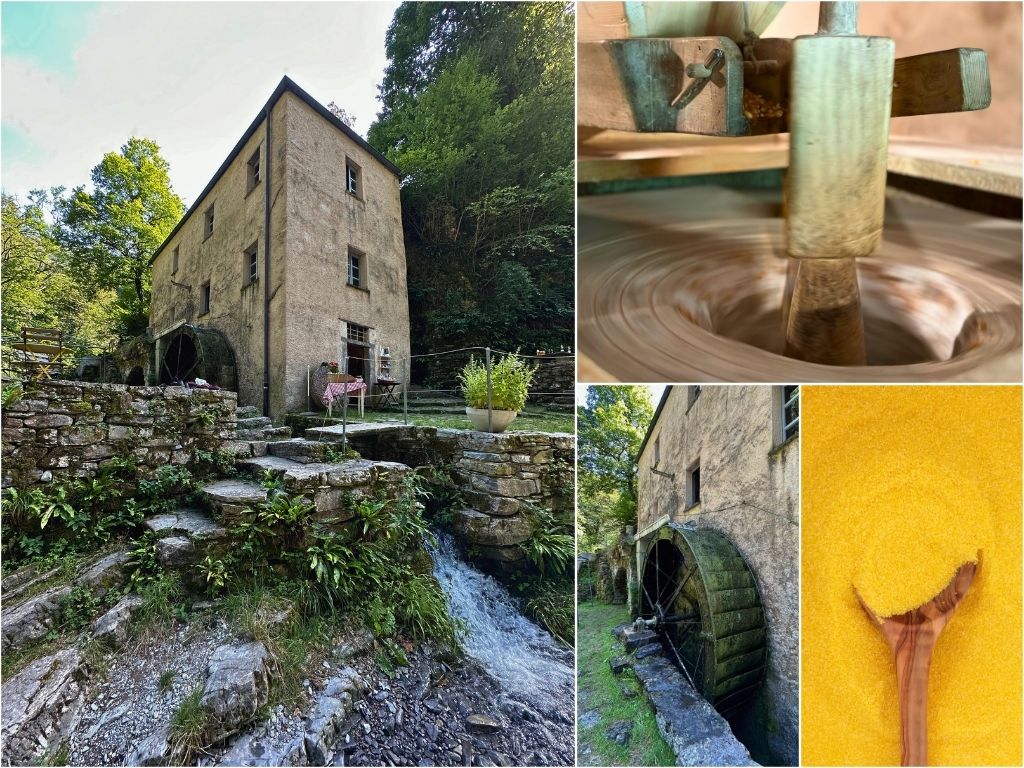
Merlot del Ticino - the vineyards of Mendrisiotto
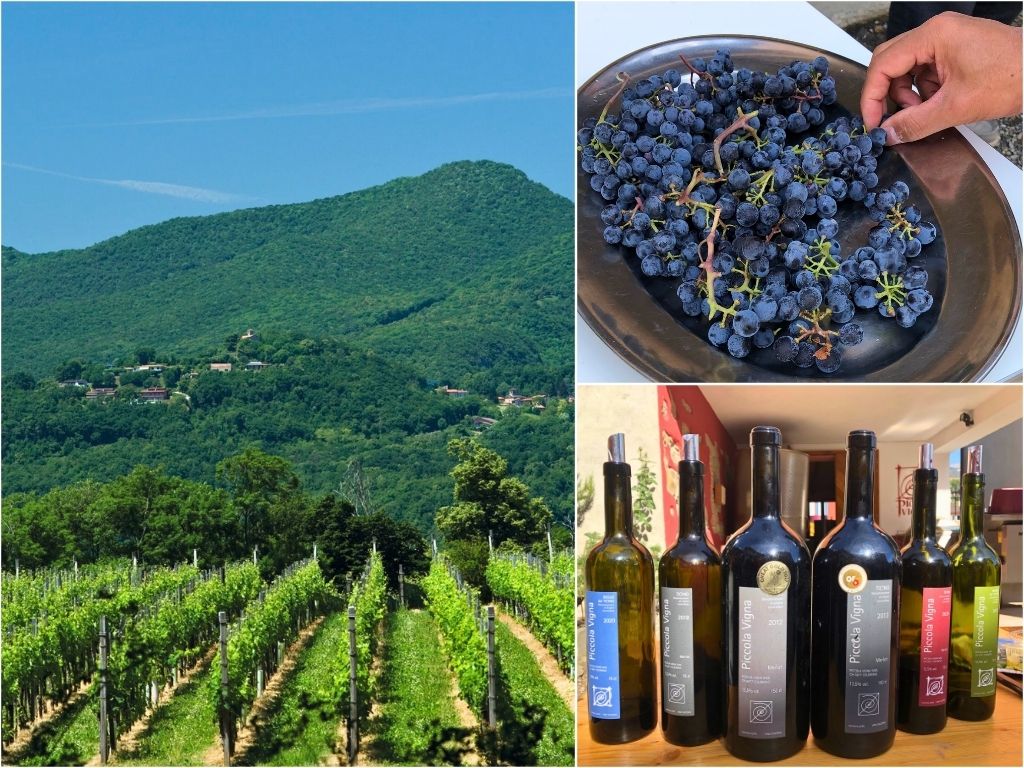
To round off a gourmet tour through the Valle di Muggio, it's worth taking a bike ride or a hike through the vineyards of the Mendrisiotto. The area at the end of the Valle di Muggio, also known as the Tuscany of Switzerland thanks to its rolling hills at the foot of Monte Generoso, is one of the best-known wine regions in Ticino and Switzerland in general. It is mostly small vineyards that produce their own wines, which are full of character and vary depending on the terroir. Merlot is predominantly cultivated. This grape variety, which has proven to be significantly more resistant to disease and rot, was introduced at the beginning of the 20th century due to mildew, which almost brought viticulture to a standstill in Ticino. However, other varieties such as Nebbiolo, Chasselas, Gamaret and many more can be found more and more often. During a visit to the cantina, you can find out directly from the winegrowers what makes their wine special and, of course, taste it.
The Valle di Muggio as a museum
The Valle di Muggio is a walk-in museum: from the pristine nature of the pre-alpine valley with its different altitudes to the cultural-historical themes and buildings to the culinary experiences and delights, the valley can be discovered and experienced with all the senses. And this is precisely the approach promoted by the Ethnographic Museum of the Valle di Muggio, which is housed in the stately Casa Cantoni in Cabbio and provides an overview of its diversity. From here you can swarm out into the many nooks and crannies of the valley to explore its richness in all its facets. In the truest sense of the word, a tour through the Valle di Muggio is a cultural borderline experience.
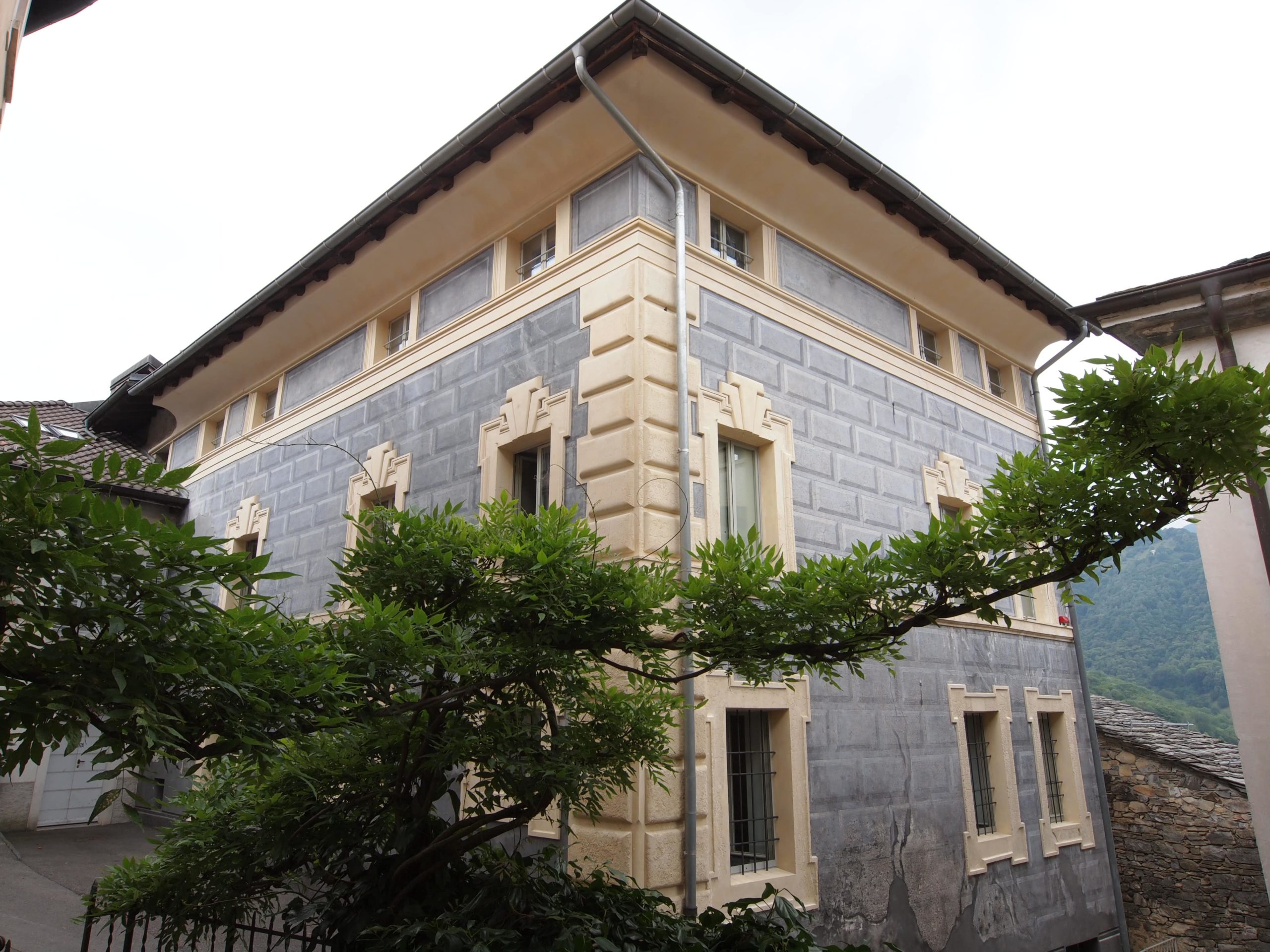
Subscribe to our newsletter and find out about new excursions
Do you like our articles? We announce new articles and stories in our newsletter, which is usually published at irregular intervals a few times a year.
Walking tours and slow adventures in Switzerland
Would you like to discover the Valle di Muggio or other regions of Switzerland? Here you will find an overview of all our wanderings, culinary excursions and slow adventures throughout Switzerland. From walking tours and pleasurable trips on an e-bike to enjoyable snowshoe treks through the winter wonderland, we offer you delightful experiences for all your senses in the most diverse regions of Switzerland.
